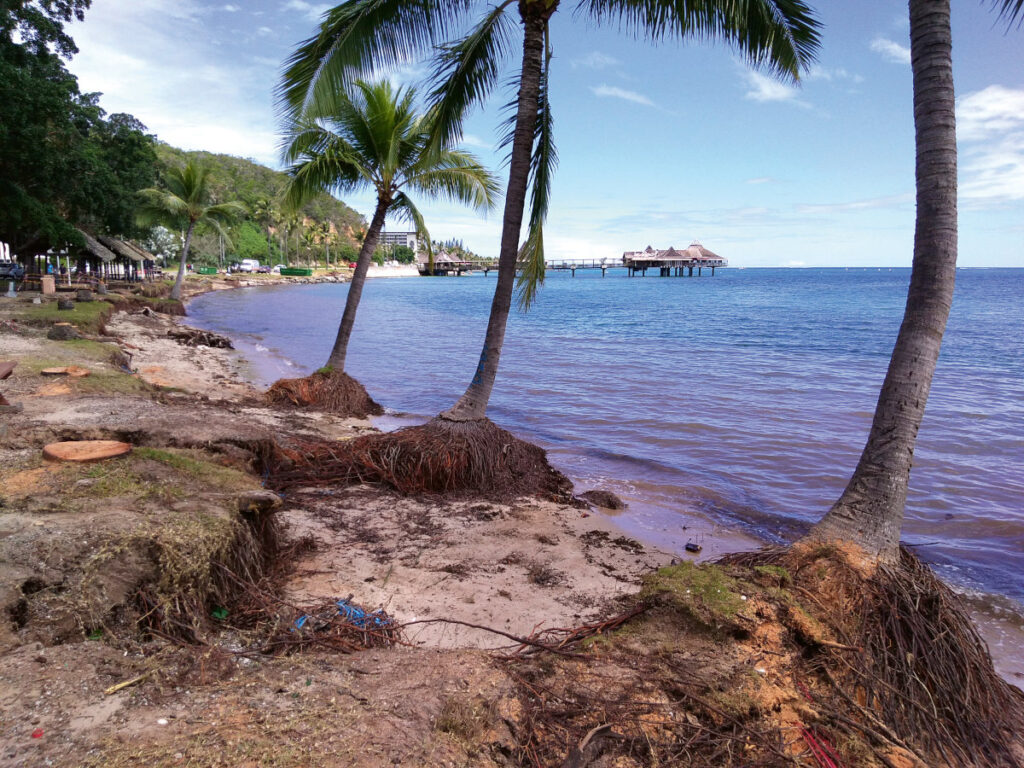[LUM#21] On the island of the cyclone
Torn leaves, broken branches, snapped trunks, uprooted trees... When the wind reaches speeds close to that of a high-speed train, how can trees withstand it? This is a crucial question for the forests of the Southwestern Pacific islands, which face between five and eight cyclones every southern summer, sculpting these island ecosystems.

How do tropical forests survive cyclones? To learn more about these ecosystems, Thomas Ibanez, a researcher at the Amap laboratory1laboratory, participated in a study to analyze the resilience of forests to cyclones on 76 islands in New Caledonia, Vanuatu, Wallis and Futuna, Fiji, Samoa, and Tonga. Between 2000 and 2020, 74 cyclones swept through the region, with varying effects on vegetation. "We wanted to characterize, in relation to the strength of the cyclones, the degree of change that the vegetation underwent and the time it needed to recover to its previous state," explains the tropical forest conservation specialist.
Forest resilience
This study drew on several disciplines, from remote sensing to modeling, to reconstruct the path of cyclones and wind speeds and visualize the condition of forests before and after storms. "For the most violent winds, which reach 280 km/h, vegetation losses reach 40% and regeneration time exceeds five months, " explains Thomas Ibanez. And in 20% of the areas affected by these devastating winds, the forest had still not regenerated after a year.
"The resilience of forests has limits that are likely to be exceeded in the future because, with global warming, the cyclones affecting this area could intensify, not in frequency but in strength," explains Thomas Ibanez. The warming of surface waters, which are the birthplace of cyclones, will have another significant consequence: a change in their trajectory. "Some forests that have been spared until now are at risk of being swept away by these violent winds, " the researcher points out.
Adaptation
How will trees that have been caressed by gentle breezes react in stormy weather? "Some are better adapted, the small and stocky ones, those with less foliage and therefore less wind resistance," explains Thomas Ibanez, who also discusses possible adaptation strategies whereby trees would more easily lose their leaves and branches in order to increase the chances of saving the trunk.
"We also want to determine which characteristics make trees more resistant: height, diameter, wood density, but it is difficult to conduct experiments designed to simulate wind stress." To get as close as possible to these island forests, Thomas Ibanez will be spending three years in New Caledonia studying the impact of cyclones on the structure and functioning of forests. "Islands are hotspots for biodiversity issues. They represent only 6.7% of the Earth's surface, but are home to 20% of the world's biodiversity, 50% of recognized threatened species, and 75% of known extinctions."
Find UM podcasts now available on your favorite platform (Spotify, Deezer, Apple Podcasts, Amazon Music, etc.).
- Amap (UM, CIRAD, CNRS, INRAE, IRD)
↩︎